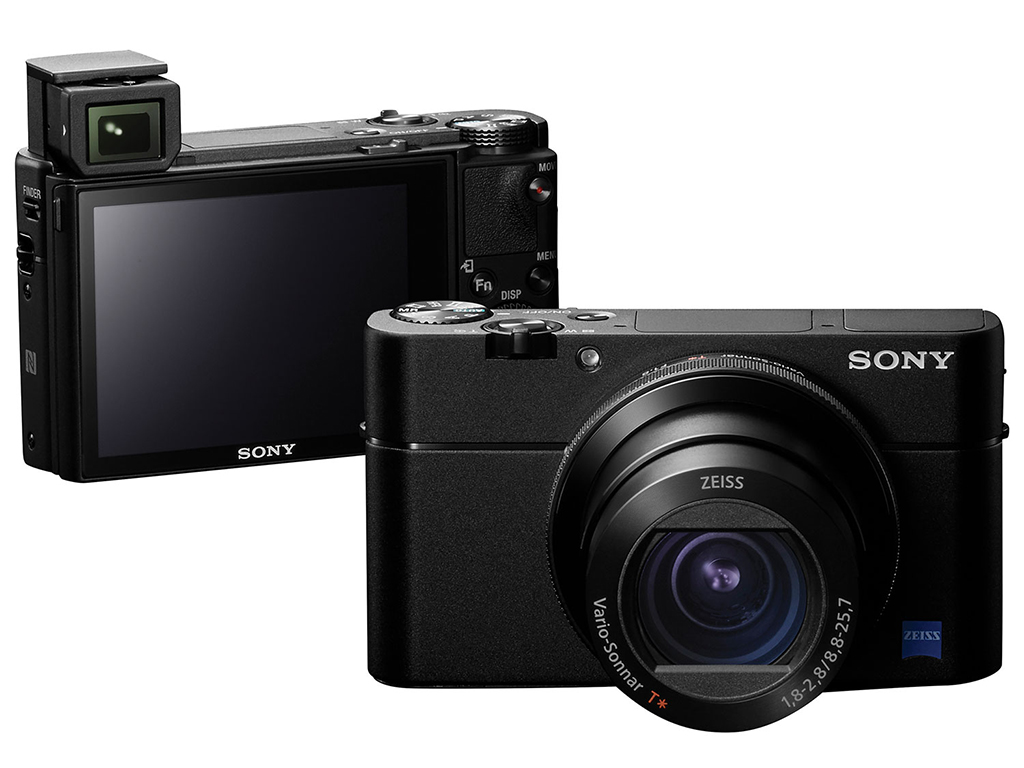 The Sony RX100 is basically the gold-standard for compact digital cameras, also known as point-and-shoots. Now in its fifth incarnation, the RX100 continues to push the boundaries of what is possible in a very small package. Because, despite the fact that it fits easily in your pocket, the Sony Cybershot RX100 V has a feature set that will satisfy even the most demanding photographer.
The Sony RX100 is basically the gold-standard for compact digital cameras, also known as point-and-shoots. Now in its fifth incarnation, the RX100 continues to push the boundaries of what is possible in a very small package. Because, despite the fact that it fits easily in your pocket, the Sony Cybershot RX100 V has a feature set that will satisfy even the most demanding photographer.
I try not to fall victim to what photographers sometimes refer to as ‘GAS’ – Gear Acquisition Syndrome. The nature of photography is that there is always new equipment coming on the market that makes you say ‘Oh, if I only I had that, the things I could do!’. But of course you have to think about your budget – and your storage space! Nevertheless, upgrades are a fact of life from time to time, and today we’re going to find out if it’s time for you to upgrade your point and shoot to the latest RX100.
The RX100 V has a 1 inch, 20.1MP sensor, which is quite a bit bigger than your average smartphone, and gives you much better low-light performance. It has a 28-70mm lens, with a minimum aperture of between 1.8-2.8, which is also very useful for low-light shooting. It is actually a ZEISS Vario-Sonnar T* lens which is very high quality and offers fantastic sharpness and clarity, with minimal distortion. Sony has managed to reduce the autofocus on time on the RX100 V to 0.05 seconds, which is about as fast as any camera on the market.
Headline features
Now let’s have a look at some of the headline features. This pocket rocket is capable of shooting up to 24 frames per second, and has a maximum shutter speed of 1/32,000 of a second. Yes, you read those numbers right. I’m not aware of any other camera with a frame rate that high. Thanks to electronic shutters (as opposed to the physical, moving kind) very high shutter speeds are becoming more common, but often they are associated with something called rolling shutter distortion. Sony has actually managed to eliminate rolling shutter distortion with the RX100 V, which is great news for sports action shooters.
Amazing video capabilities
The RX100 V is also something of a beast when it comes to video (almost to be expected from a Sony camera nowadays). It shoots 4k video at 30fps, and HD video at up to 120 frames per second – awesome for slo-mos. That’s all pretty impressive, but where things get really interesting is in the HFR (high frame rate) video mode, where you can record at up to 960 frames per second. That. Is. Epic. The limitations are the resolution, which is less than HD, and the recording time which is about 4 seconds. Nevertheless, this is a truly amazing feature. Unfortunately I didn’t know how to find the feature while I had the camera, because it’s not just a matter of changing the frame rate to 960fps like you would if you wanted to go from 30fps to 120fps, but you actually have to change to HFR mode.
Which brings me to my own impressions of the RX100 V. Right off the bat I need to mention an issue that I’ve mentioned in previous Sony camera reviews and sadly hasn’t been resolved; the awful menu situation. They are just horrible to navigate. I’m sure Sony will address this someday, because it’s a commonly known problem, but at this point it really takes away from the overall experience of using the camera.
Tricky to handle
In terms of ergonomics the RX100 isn’t exactly a joy to handle, and indeed I’m not sure it would be possible to produce a camera this small that also feels nice and is easy to operate, but my gut tells me that someone out there could do better. The electronic viewfinder pops up from the left hand side of the camera, and you then have to pull the back surface out a bit so that it’s in focus. I was impressed to notice that there is actually a teeny tiny diopter installed which allows you to compensate for any vision impairment you may have. While I am a believer in the value of immersing oneself in the photographic experience by using a viewfinder, I found this viewfinder a bit tiddly and not that great to use. [Of course ‘tiddly’ is a word!].

Short battery life
Nowadays I don’t worry too much about image quality when it comes to assessing new cameras – pretty much every modern camera shoots excellent stills. Recently I’ve been shooting a lot more video though, so I was really excited to see how the RX100 V performed in that regard. I mentioned the quality and frame rates earlier, but I should also mention that you can shoot uncompressed 4k here, which is a pretty big deal, because it gives you fantastic leeway to tweak your shots in post-production. So you can basically shoot a feature film with this thing. Now, the bad news. The battery life is nothing short of woeful. It’s almost guaranteed to let you down. If you were hoping to capture any kind of ‘day in the life of’ video, you would need at least one spare battery, and probably more. The good news however, is that the battery is recharged simply by plugging in a USB power source (like a power bank, for example), and as I discovered, you can operate the camera while it is recharging, which is great.
I was pleased to notice that the RX100 V comes packed with Capture One, a powerful editing tool that allows you post-process your images. It’s really important in the digital era to have a means to process your files (particularly RAW files) and it’s great that Sony have pre-empted this need.
I don’t want to sound overly negative about the RX100 V, because it is a truly remarkable camera that is pretty much in a class of it’s own. If you love to shoot video, and travel light, this is the camera for you. But there are a number of niggling issues that keep me from loving this camera unreservedly, and I really hope that Sony will put some resources into addressing these issues in future releases.



